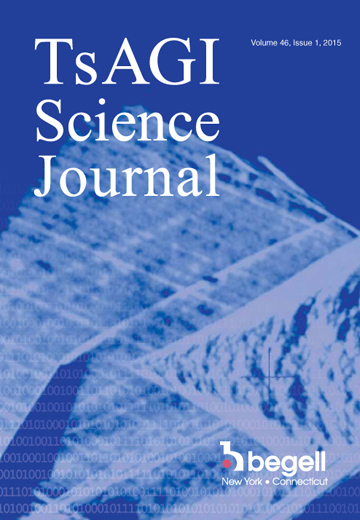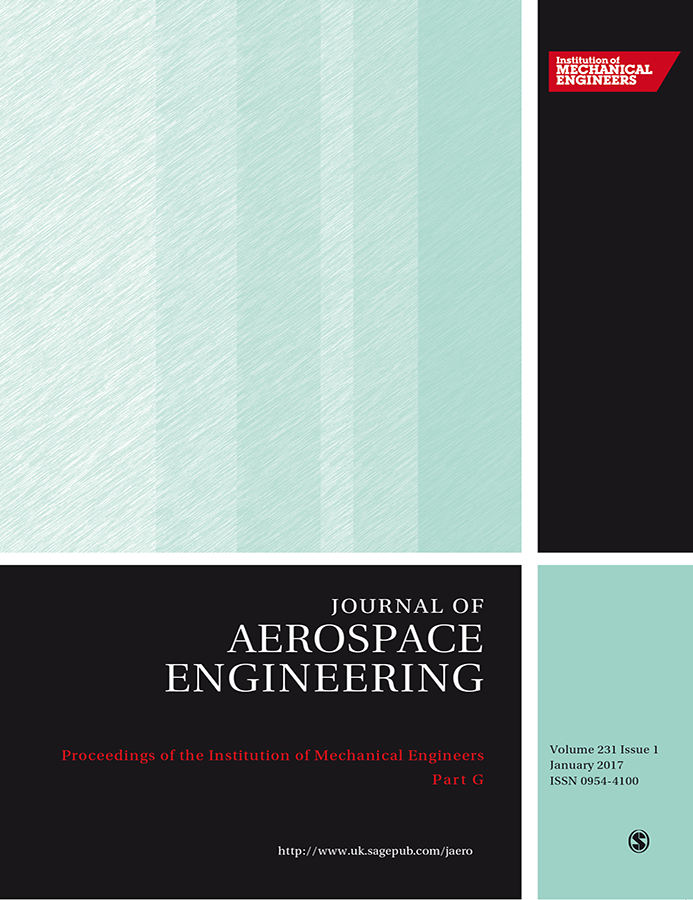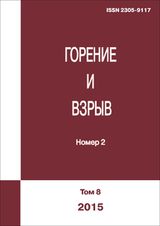Words From The Editor
Dear Colleague,
Shortly after the last newsletter, here is a new one with some interesting events announcements from our partners and updates on the scientific publications we cover.
A preview of the two new issues of the Combustion and Explosion is presented, together with a few thoughts on the recent release concerning the topic of OpenAccess for scientific papers.
The usual brief review and characterization of interesting papers published since last newsletter is present, as well as an example of some interesting patent applications in the field of ibeacons, specialized positioning devices that could in the future be used in civil aerotransports and space applications.
JP Taran
P.S.
Make sure to report your own published innovative results and those of others to Stella Sauvan at the special email address
In this issue
Recently Published Patents of interest
How to browse the EPO patent list
Conference announcements
CNES/ISAE-SUPAERO conference on Orbital Systems
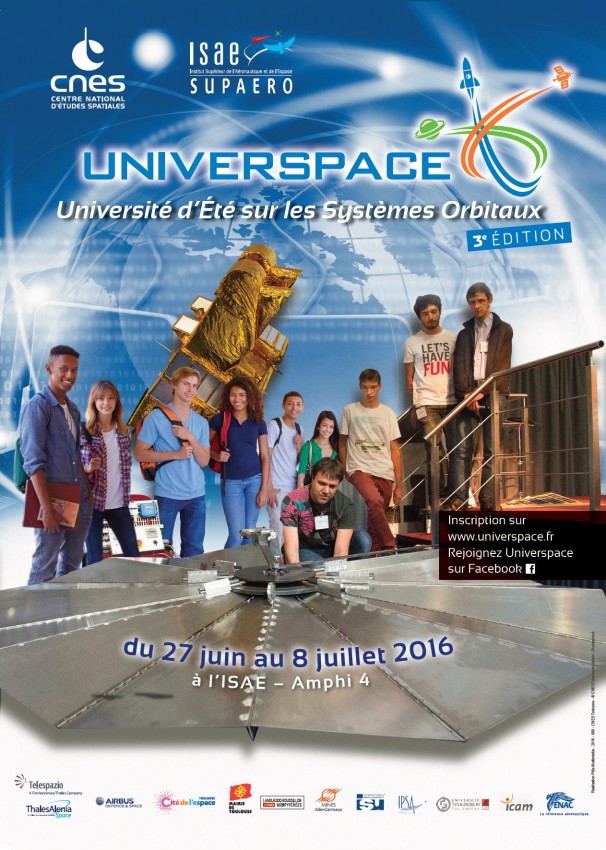 |
It is a pleasure to bringing to the attention of our visitors the initiative of CNES and ISAE-SUPAERO for fostering studies and encouraging students of Orbital Systems. The summer school, already at its 3rd year, has its own website reachable at the address www.universpace.fr. The targeted audience are undergraduate students and their teachers, Definitely interesting for students that could become future engineers and scientists on this sector, the school has limited place available and inscriptions will close the 21 June, make sure to visit this summer school for more info. |
The final program is available here.
Eucass wishes CNES and ISAE-SUPAERO a great success in their endeavor: nurturing interest in young generation for space applications or informing the public at large of the endless possibilities space offers is definitely noteworthy.
EUCASS advanced workshop
Fundamentals of Collisions of Fast Particles with Surfaces, Aussois, France, 11-16 September 2016
 |
Do not fail to sign up for this new ATW. It addresses fundamental aspects, experimental methods, and modelling of phenomena that take place in re-entry physics, detonation of energetic materials, PECVD, Tokamaks, etc. It will generate significant advances in aerospace R&T by fostering cross fertilisation between laboratories that had never interacted so far. The very best scientists, world over, have been recruited. A visit of Onera facilities at Modane is planned. Register promptly, send your students and submit a poster, attendance is limited. |
6th EASN International Conference on Innovation in European Aeronautics Research
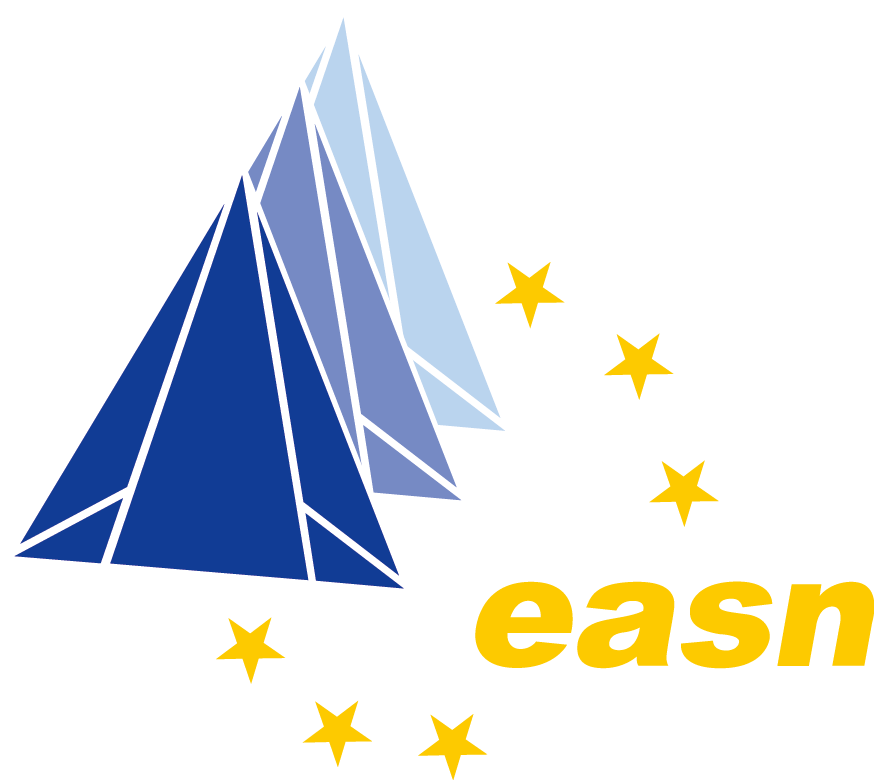 |
We wish to introduce our readers to the 6th EASN International Conference on Innovation in European Aeronautics Research. This conference, whose website is reachable at the address easnconference.eu, will take place October 18 – 21 2016 at Porto, Portugal. The 2016 EASN Conference will be a flagship event in dissemination of aeronautics research activities and its goal is to share high quality, current achievements and new upstream research ideas. |
The EASN Association
The long-term goal of establishing EASN was to built up an open, unique European platform in order to structure, support and upgrade the research activities of the European Aeronautics Universities, as well as to facilitate them to respond to their key role within the European Aeronautical research Community in incubating new knowledge and breakthrough technologies. The European Aeronautics Science Network principles have obtained the support of the commission thanks to two funded Specific Support Actions.
On 06.05.2008, the EASN Association was officially established which is:
- An International association based in Brussels
- Self funded and self sustainable
- Coordinated and run by a board of directors which is elected by the General Assembly for a 3 year term
Eucass wishes a successful conference to our colleagues at EASN.
News from Journals
For your convenience, starting from newsletter #10 we provide for each article the keywords selected by the respective journal editor.
At the same time, our newsletter editor or his helper is classifying the most interesting articles for EUCASS according to our areas of interest.
You'll find below first the EUCASS classification with links to the proper article in the classical article list based on the different journals presented in this newsletter.
-
Applied Mathematics
-
Fluid Mechanics
- The refined coles’ law of the wake
- Aerodynamic performance improvement of the uas-s4 ehecatl morphing airfoil using novel optimization techniques
- Flow past a moderately heated horizontal cylinder at low reynolds number
- The effect of edge profile on delta wing flow
- Investigation of the unsteady flow of a transonic compressor using the nonlinear harmonic method
- Computational investigation of the flow structure over a pitching delta wing at supersonic speeds
-
Thermophysics and Aeromechanics
-
Energy and propulsion, including chemical, electrical and nuclear
-
GNC & Avionics
-
Information processing, command and control
-
Materials
-
Structures
- Method of optimal aerodynamic design of the nacelle for the main propulsion system with a high bypass ratio
- Method of computations of loads at the design of rotor units and helicopter control system
- A novel topology optimization method for composite beams
- Aeroservoelastic modeling and analysis of a six-dof hypersonic flight vehicle
- Updating of finite element model of aircraft structure according results of ground vibration test
-
Systems
-
Enabling S & T/Numerics
-
Enabling S & T/Simulation
- A novel topology optimization method for composite beams
- Aerodynamic performance improvement of the uas-s4 ehecatl morphing airfoil using novel optimization techniques
- Reducing transonic wind tunnel sting interference effects for concealed store release testing
- Experimental investigation of particle damper-based vibration suppression in printed circuit board for spacecraft applications
- Aero engine compressor fouling effects for short- and long-haul missions
-
Enabling S & T/Metrology (conventional & non-intrusive) and instrumentation
TsAGI Science Journal
Since Newsletter #15 (see the past issues on our website here) two new volumes have been published in the meanwhile:
For your convenience, the toc of the last issues is reported below:
New method of optical investigations of boundary layer state in aerodynamic experiment
Brutyan, Murad Abramovich and Petrov, Albert Vasilievich and Potapchik, Aleksandr Vladimirovich
Pages: 509–517
Keywords: non-contact measurements, boundary layer, transition trips, aerodynamic experiment
Abstract
The refined coles’ law of the wake
Mikhailov, Vladimir Victorovich and Samoilova, Nina Veniaminovna
Pages: 519–532
Keywords: turbulent boundary layer, the wake law, "half power law"
Abstract
Method of optimal aerodynamic design of the nacelle for the main propulsion system with a high bypass ratio
Zlenko, Nikolay Alekseevich and Mikhaylov, Sergey Vladimirovich and Savelyev, Andrey Aleksandrovich and Shenkin, Andrey Vladimirovich
Pages: 533–558
Keywords: optimization, aerodynamic design, computational fluid dynamics, nacelle
Abstract
Numerical analysis of single-expansion ramp nozzle performance in supersonic flow
Mazurov, Anatoliy Pavlovich
Pages: 559–576
Keywords: single-expansion ramp nozzle, viscous gas, numerical method,
Abstract
Method of computations of loads at the design of rotor units and helicopter control system
Barinov, Andrei Yurievich and Pavlenko, Nikolai Serafimovich
Pages: 577–590
Keywords: rotor, hinge moment, oscillations, blade deformations, differential equations
Abstract
The static pressure influence on electrophysical characteristics of a dielectric barrier discharge
Gamirullin, Marat Dzhaudatovich and Litvinov, Vladimir Mikhailovich and Pimenova, Tatiana Anatolyevna and Rebrov, Igor Evgenievich and Uspenskii, Aleksandr Aleksandrovich and Urusov, Andrey Yuryevich
Pages: 591–607
Keywords: dielectric barrier discharge, plasma actuator, total pressure probe, flow velocity, static pressure, volumetric force, electric power, energy efficiency
Abstract
Hydrogen injection into a supersonic flowof air in a channel with radial pylons
Alekseev, Dmitrii Pavlovich and Tunik, Yurii Vladimirovich
Pages: 609–618
Keywords: mixing of gas flows, turbulence, viscosity, diffusion, hydrogen-air mixture, total pressure loss, pylon
Abstract
Journal of Aerospace Engineering
Since last newsletter, one new issue has been released:
- Volume 230, Issue N.7 of June 2016 (toc available here)
The toc for this last issue N.7 is reported below for your convenience.
A novel topology optimization method for composite beams
Ren, Y. and Jinwu, X. and Zheqi, L. and Tiantian, Z.
Pages: 1153–1163
Keywords: Composite beam,topology optimization,warping deformation,shear deformation,Sequence Linear Programming
Abstract
Aerodynamic performance improvement of the uas-s4 ehecatl morphing airfoil using novel optimization techniques
Gabor, O. S. and Simon, A. and Koreanschi, A. and Botez, R. M.
Pages: 1164–1180
Keywords: Unmanned aerial system,morphing wing,laminar flow,transition,optimization
Abstract
Impact of interaction between cavity flow and mainstream on the performance of a model trapped vortex combustor
Wu, Z. and He, X. and Jin, Y. and Song, Y. and Zhu, Y.
Pages: 1181–1200
Keywords: Trapped vortex combustor,pollutant emission,aerodynamic multipoint fueling,residence time,spatial unmixedness,difference of tracer-pulse response
Abstract
Fast local representation of gravity anomaly along flight trajectory
Zhou, H. and An, X. and Zheng, W. and Tang, G.
Pages: 1201–1215
Keywords: Gravity anomaly,local representation,fast trajectory calculation,infundibular tunnel,net function
Abstract
Adaptive decoupling control of hypersonic vehicle using fuzzy-neural network observer
Bai, C. and Chen, J. and Ren, Z. and Li, Q. and Xiong, Z.
Pages: 1216–1223
Keywords: Hypersonic vehicle,adaptive decoupling control,fuzzy-neural network observer,MIMO nonlinear systems,parameter uncertainties
Abstract
Flow past a moderately heated horizontal cylinder at low reynolds number
Ajith Kumar, S. and Lal, S. A. and Sameen, A.
Pages: 1224–1239
Keywords: Mixed convection,vortex shedding,negative lift,drag reduction,hybrid finite element–finite volume method
Abstract
Aeroservoelastic modeling and analysis of a six-dof hypersonic flight vehicle
Zong, Q. and You, M. and Zeng, F. and Dou, L.
Pages: 1240–1251
Keywords: Hypersonic flight vehicle,six-DOF,aeroservoelastic,modeling,controller design,analysis
Abstract
The effect of edge profile on delta wing flow
Mat, S. B. and Green, R. and Galbraith, R. and Coton, F.
Pages: 1252–1262
Keywords: Delta wing,primary vortex,inner vortex,leading edge bluntness,Reynolds number,angle of attack
Abstract
Investigation of the unsteady flow of a transonic compressor using the nonlinear harmonic method
Zhang, P. and Liu, B. and Shi, L. and Li, J.
Pages: 1263–1272
Keywords: Unsteady flow,transonic compressor,rotor–stator interaction,harmonic,deterministic stress
Abstract
Bifurcation analysis of the asymmetric rolling missiles
Sun, H. and Yu, J. and Zhang, S.
Pages: 1273–1283
Keywords: Bifurcation analysis,global analysis,aerodynamic asymmetric rolling missiles,lock-in
Abstract
Reducing transonic wind tunnel sting interference effects for concealed store release testing
Doig, G. and Bogdan, G. and Kabir, K. R. and Snyder, M. R.
Pages: 1284–1298
Keywords: Store release,CFD,wind tunnel,transonic,sting interference
Abstract
Experimental investigation of particle damper-based vibration suppression in printed circuit board for spacecraft applications
Veeramuthuvel, P. and Shankar, K. and Sairajan, K. K.
Pages: 1299–1311
Keywords: Particle damping,printed circuit board,vibration response,system parameters
Abstract
Aero engine compressor fouling effects for short- and long-haul missions
Igie, U. and Goiricelaya, M. and Nalianda, D. and Minervino, O.
Pages: 1312–1324
Keywords: Jet engine model,aero engine operation,compressor fouling,degradation,short-haul,long-haul
Abstract
Experimental research on a rotary-valved air-breathing pulse detonation engine
Wu, Y.-W. and Han, Q.-X. and Zhao, W.
Pages: 1325–1333
Keywords: Rotary-valved,air-breathing,deflagration-to-detonation transition,pulse detonation engine,single-tube
Abstract
Computational investigation of the flow structure over a pitching delta wing at supersonic speeds
Hadidoolabi, M. and Ansarian, H.
Pages: 1334–1347
Keywords: Delta wing,flow pattern,pitching oscillation,supersonic flow,vortex structure
Abstract
Updating of finite element model of aircraft structure according results of ground vibration test
Cecrdle, J.
Pages: 1348–1356
Keywords: Aeroelasticity,model updating,ground vibration test,Bayesian estimation,EV-55M aircraft
Abstract
Combustion and Explosion Journal
Two new volumes of the Combustion and Explosion journal are in preparation and will be soon available. We can provide here thanks to the Editor in Chief of the journal a preview of the articles that will be contained in these two new issues. It is not possible however provide the links to the abstract as usual. The new issues are
- Volume 9, Issue N.1
- Volume 9, Issue N.2
The toc for these issues is presented below for your convenience
Table of Contents (Volume 9 Issue N.1)
Self-Ignition In Gas Vortices
A. A. Borisov, V. A. Smetanuk, K. Ya. Troshin, and I. O. Shamshin
Page 4
Influence Of Near-Wall Effects On The Results Of Induction Time Measurement In H2/O2/Ar Gas Mixture In Shock Tubes Of Different Roughness
O. G. Penyazkov and A. V. Skilandz
Page 14
Inhibition Of Combustion And Explosion Of Methane–Air Mixtures In The Presence Of Coal Dust
V. M. Prokopenko, S. K. Abramov, and V. V. Azatyan
Page 21
Кinetic Nature Of Blue Flames Of Isooctane Self-Ignition By Compression
V. Ya. Basevich, A. A. Belyaev, F. S. Frolov, and S. M. Frolov
Page 28
Thermometry Of A Diffusion Flame Of Decane By Cars Spectroscopy
V. D. Kobtsev, S. A. Kostritsa, V. V. Smirnov, A. M. Starik, O. M. Stel’makh,vand A. A. Tumanov
Page 35
Effect Of Turbulence On The Mean Rate Of Chemical Transformations: Review
S. M. Frolov
Page 43
Numerical Investigations Of Possibilities Of Mixture Formation And Combustion Processes Improvement In Cylinder Of A High-Speed Diesel Engine
S. S. Sergeev
Page 59
A Numerical Study Of Enhanced Autoignition In Hcci Hydrogen Fuelled Engine
G. L. Agafonov, P. A. Vlasov, A. M. Tereza, and O. B. Ryabikov
Page 67
Homogeneous Pyrolysis Of Isopentane Under Pulsed Adiabatic Compression
I. V. Bilera and N. N. Buravtsev
Page 74
Production Of Olefins By Conjugated Oxidation Of Light Hydrocarbons
N. M. Poghosyan, M. Dj. Poghosyan, O. V. Shapovalova, A. V. Nikitin, L. N. Strekova, and V. S. Arutyunov
Page 83
Hydrogen Production In Reaction Of Aluminum With Water At Activation By Copper
V. M. Nikolaev and V. M. Shmelev
Page 91
Thermal Decomposition Of Monocyclic Nitropyrazoles
A. N. Pivkina, A. A. Bragin, N. V. Muravyev, K. A. Monogarov, O. S. Gryzlova, T. K. Shkineva, and I. L. Dalinger
Page 98
Thermal Decomposition Of Cyanuric Triazide
V. V. Nedelko, B. L. Korsunskiy, T. S. Larikova, S. V. Chapyshev,N. V. Chukanov, and Y. Shu
Page 109
Computer Simulation Of Thermochemical And Explosive Characteristics For Ammonium Salts Of Tetrazol-Furazanes And Tetrazol-Furoxanes Derivatives
D. V. Khakimov and T. S. Pivina
Page 118
Low Velocity Detonation In Cast Composite Rocket Propellants
A. A. Sulimov and B. S. Ermolaev
Page 125
Detonation Of The Mixtures Of Nanoscale Aluminum With Ammonium Perchlorate
А. A. Shevchenko, A. Yu. Dolgoborodov, V. G. Kirilenko, and M. A. Brazhnikov
Page 131
Method Of Estimation Of Sensitivity Indicators For Solid High Explosives To Impact.
A. V. Dubovik
Page 139
Table of Contents (Volume 9 Issue N.2)
The Calculation Of The Surface Of Potential Energy Of The Reaction C5h4o+H By Quantum-Mechanical Ab Initio Methods
A. R. Ghildina, A. M. Mebel, A. D. Oleynikov, P. A. Mikheyev and V. N. Azyazov
Page 4
Experimental And Modeling Study Of Chemical Ionization In The Oxidation Of Acetylene And Methane Mixtures Behind Reflected Shock Waves
G. L. Agafonov, P. A. Vlasov, I. V. Zhil’tsova, D. I. Mikhailov, V. N. Smirnov and A. M. Tereza
Page 13
Determination Of Self-Ignition Delay Of Methane–Air Mixtures With Addition Of C2–C5 Alkanes
K. Ya. Troshin, A. V. Nikitin, A. A. Borisov, and V. S. Arutyunov
Page 23
Jet-Flame Combustion. Diagnostics Of Hydrodynamic Instability Modes And Flow Control
D. M. Markovich and V. M. Dulin
Page 31
On A Theoretical Prediction Of The Dynamics Of Pulsating And Cellular Detonations In Gases
A. R. Kasimov, L. M. Faria, and R. R. Rosales
Page 42
Experimental Studies Of Stand Sample Of Rocket Engine With Continuous-Detonation Combustion Of Natural Gas – Oxygen Mixture
V. S. Ivanov, V. S. Aksenov, S. M. Frolov, and I. O. Shamshin
Page 51
Three-Dimensional Numerical Simulation Of Operation Process And Thrust Performance Of Bench Rocket Engine With Continuous Detonation Combustion Of Natural Gas – Oxygen Mixture
S. N. Medvedev, V. S. Ivanov, and S. M. Frolov
Page 65
Numerical Simulation Of The Design And Performance Of A Ramjet With Continuous-Detonation Combustor
A. V. Dubrovskii, V. S. Ivanov, A. E. Zangiev, and S. M. Frolov
Page 80
Optical Method For Fast Estimation Of Parameters Of The Shock Wave From Large Scale Ground Explosion
P. V. Komissarov, G. N. Sokolov, and V. V. Lavrov
Page 94
Effective Two-Fluid Model For Theoretical Equation Of State Of Ternary Mixture
Yu. A. Bogdanova, S. A. Gubin, and A. A. Anikeev
Page 103
Towards Increase Of Oil Production
N. M. Kuznetsov
Page 111
Critical Conditions In Reaction Of Aluminum With Water
G. N. Mokhin and V. M. Shmelev
Page 120
Simulation Of The Crystal Structure And Density Of Ammonium Salt Of Azidotetrazolfuroxane
A. V. Dzyabchenko, D. V. Khakimov, and T. S. Pivina
Page 128
Thermochemical Properties Of Alkaline Salts Of 2,4,6-Trinitrophloroglucinol
T. S. Kon’kova, Yu. N. Matyushin, E. A. Miroshnichenko, and A. B. Vorob’ev
Page 136
5-Amino-3,4-Dinitropyrazole: Thermal Stability And Combustion
N. V. Muravyev, A. A. Bragin, K. A. Monogarov, A. S. Nikiforova, N. V. Nikolaev, I. V. Fomenkov, N. I. Shishov, and A. N. Pivkina
Page 146
News from Readers
H2020, Open Science and the changing road ahead for scientific publishing in the EU
A very recent meeting held in Brussels (May 26-27 2016) by the European Competitiveness Council (COMPET) could become a pivotal point on the history of scientfic publishing in Europe. The provional version of the outcome of the council is possibly not sufficient to grasp the profound implications that the decisions taken could bring if the right conditions are met and the directives implemented correctly.
Other press releases and statements try to put in a better perspective and illustrate more the disruptive nature of the changes discussed in the Council. See for example the title of a press release present in the website of The Netherlands rotating EU presidency: All European scientific articles to be freely accessible by 2020.
The basic idea is that scientific papers (and the underlying data) would foster better research and innovation if they were freely accessible under the concept of Open Science. This concept is not new. Since years the EU has been experimenting and testing the principles, for example sponsoring some FP7 projects publications via some post-grant funds. The following schema, used many times in EU commissions pubblications, (i.e. from here), illustrates well the difference between knowledge witheld for patenting purposes, private publishing, and open access.

This schema illustrates as well some of the issues with the current definition of Open access to scientific data: Gold open access requires immediate access to the scientific paper at the time of the publication (i.e. on a traditional archival peer reviewd journal), while a Green open access would allow a transitional period ("embargo"), during which the access is restricted.
All the difficulties will come from a rational determination of the period of time during which the embargo could be effective: months or years, depending from the field of research could be excessive.
Beside a free, unrestricted access to the scientific paper, the data used for the research is as well part of the bigger picture: typical scenario, a paper researches some data, and draws some conclusions.
Whithout the underlying data, it is very difficult for others to replicate the study findings to determine if they are indeed sound, or if intellectual or calculatory mistakes have been conducted. Beside the immediate concerns about the correctness of the published analysis, the most interesting aspect is the possibility of analyzing old data via newer techniques and methodologies.
But of the whole data generated or analyzed during a scientific study, how much and which to preserve, and how? The commission in the H2020 framework has introduced the concept of Data Management Plans that help with some guidelines the choices of the researchers. Up to the last council meeting, not all the project hads to publish all (or part) of their data, only those that participated to the Open Data Pilot (see the announcement of 2013 on the topic). It is clear that following these directives for researchers will be a novel experience, and it will be interesting to see how they are implemented.
Finally, the scientific papers and the underlying data, to be made freely accessible must be stored somewhere online (the so called trusted repositories), for example on the European Open Science Cloud.
In reality, as long a set of reccomandations and interoperability are respected, each institution could host its own data, so long as the access is guaranteed to third parties.
Currently it is too early to know how fast the recent decisions will impact science in the EU: will the quality of scientific publications suffer, without the help of established scientific editors? Will the embargo period be too long? Is this a disruptive change introduced by the EU?
Many of our readers are already confronted with H2020 projects, maybe even with Open Data Pilot Projects. Possibly, at the end of their projects, when all is said and done, it would be interesting to ask them their impressions and feelings on this topic.
Feel free to contact us at any time to discuss this topic!
Recently Published Patents of Interest
Topic: iBeacon
The following patents have been selected from the EPO database using the following criteria: "WORD = ibeacon AND PUA12 >= 20160101". In this case, this means all patents whose A1/A2 documents have been published after the first January 2016, with somewhere in the text ibeacon. Since patents can be filed towards different organizations, sometimes the data available in the EPO database (the version available for free online) is not the most complete. In that case an external link is used.
What is an iBeacon and why we think it is worth of interest?
The answer is pretty simple: ubiquitous smartphone usage has given the masses access to GPS/GLONASS, maybe soon Galileo and BeiDou, globan navigational systems.
The reliance on such tools is sometime so extreme that we start talking more and more as well of Death by GPS.
Global positioning, together with crowdsourcing techniques, can severely alleviate congestion in some highly frequented roads: one needs only a smartphone, a signal from your selected constellation, and a special application to do smart driving. Obviously, for crowdsourcing to work, the more people are using a particular system, the better. There are some implication of the market dominance of a particular application over the others in absence of a free exchange of data with other applications, but this cannot be discussed here.
What cannot be achieved with a smartphone alone, is an indoor navigation/indoor positioning system. As a global navigational system requires a constellation of satellites with well known positions in time and signals, an indoor positioning system requires some devices, with a well known location in space, that need to talk to the smartphone.
The term iBeacon is a protocol developed by Apple, and that many use on LE Bluethoot devices. Indoor positioning systems are still on their infancy, but it is possible to imagine that in the future you could navigate inside a building, i.e. an airport and sit inside a plane knowing where your luggage is under your feet in the carbo bay.
Currently some home automation systems use an iBeacon (where here we use interchangeably the name of the protocol and the device) to determine whenever a person is at home or not, when the navigation system of the smartphone cannot be trusted.
An iBeacon device can indeed be used both as a moving object or as a reference point, depending from the needs.
There are some privacy and technological issues to overcome, but who could have imagined years ago what could you do with a GPS today? Therefore patents on this field could be of extreme interest to guess how to the technology will evolve tomorrow. See below a selected few.
- Method for displaying information on a mobile device dependent on the geographical position of a mobile device with respect to a stationary device and on its physical movement
- Method for obtaining a secured communication signal between a mobile device and a stationary device
- Method for scanning neighboring devices and electronic device thereof
- System and method of communicating presence information
- Method and assembly for authorising an action on a self-service system
- Secure short-distance-based communication and access control system
- Messaging service export
- Method of analysing information in a communication network and corresponding device
- Mobile device and method for remote control thereof
- Transmission system, transmission terminal, and transmission method
- Semiconductor apparatus and radio communication apparatus
- System for auto-configuration of devices in a building information model using bluetooth low energy
How to browse the EPO patent list
There are different tools online to browse/search patents, for example google and the wipo. Here we will be using the EPO Patent information services for experts, from this address. It is possible to browse patents based on many parameters, inventor name, applicant/proprietor (usually a company), application date, etc. etc. In the future we will consider patents that have published their A1/A2 documents since the date of the last newsletter.
The definition of A1 and A2 are available here.
- Basically when a European patent application is published together with the search report done by the agency, it is known as an A1 publication. When this application is published without the search report, it is an A2 document.
- The search report is then published later as an A3 document.
- When the patent is granted, it is published as a B document.



